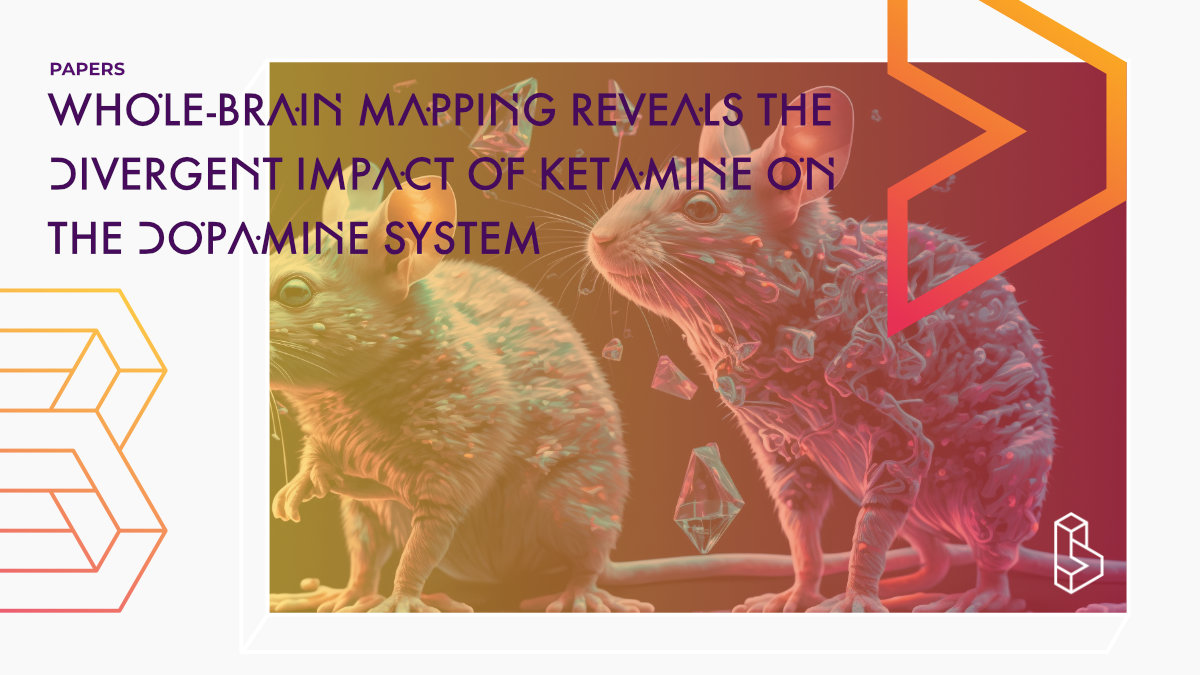This pre-print brain-mapping study in mice (2023) shows that repeated ketamine administration decreases dopamine neurons in the midbrain and increases in the hypothalamus. It also reveals further evidence for the plasticity-increasing effects of ketamine.
Abstract
“Ketamine is a multifunctional drug with clinical applications as an anesthetic, as a pain management medication and as a transformative fast-acting antidepressant. It is also abused as a recreational drug due to its dissociative property. Recent studies in rodents are revealing the neuronal mechanisms that mediate the complex actions of ketamine, however, its long-term impact due to prolonged exposure remains much less understood with profound scientific and clinical implications. Here, we develop and utilize a high-resolution whole-brain phenotyping approach to show that repeated ketamine administration leads to a dosage-dependent decrease of dopamine (DA) neurons in the behavior state-related midbrain regions and, conversely, an increase within the hypothalamus. Congruently, we show divergently altered innervations of prefrontal cortex, striatum, and sensory areas. Further, we present supporting data for the post-transcriptional regulation of ketamine-induced structural plasticity. Overall, through an unbiased whole-brain analysis, we reveal the divergent brain-wide impact of chronic ketamine exposure on the association and sensory pathways.”
Authors: Malika S. Datta, Yannan Chen, Shradha Chauhan, Jing Zhang, Estanislao Daniel De La Cruz, Cheng Gong & Raju Tomer
Summary of Whole-brain mapping reveals the divergent impact of ketamine on the dopamine system
Ketamine is a schedule III substance with clinical applications as a dissociative anaesthetic, pain management drug, and, most recently, transformative fast-acting antidepressant. It acts broadly in the brain, most prominently as a non-competitive antagonist of the N-methyl-D-aspartate receptor (NMDAR). The long-term impact of chronic ketamine exposure on brain networks remains much less understood, with profound scientific and clinical implications. The authors sought to systematically investigate the brain-wide impact of chronic ketamine exposure on the entire dopaminergic system in mice.
Chronic ketamine exposure over time results in divergent brain-wide changes in the dopaminergic system, with post-transcriptional regulation mechanisms modulating the ketamine-induced structural plasticity.
Find this paper
Whole-brain mapping reveals the divergent impact of ketamine on the dopamine system
https://doi.org/10.1101/2023.04.12.536506
Open Access | Google Scholar | Backup | 🕊
Cite this paper (APA)
Datta, M. S., Chen, Y., Chauhan, S., Zhang, J., De La Cruz, E. D., Gong, C., & Tomer, R. (2023). Whole-brain mapping reveals the divergent impact of ketamine on the dopamine system. bioRxiv, 2023-04.
Study details
Compounds studied
Ketamine
Topics studied
Neuroscience
Study characteristics
Animal Study
Bio/Neuro

